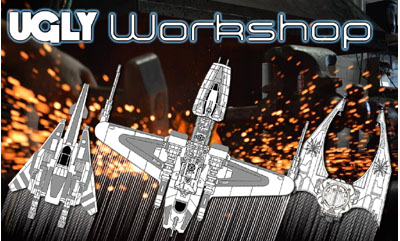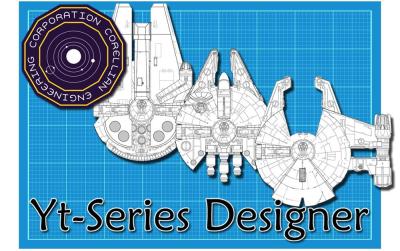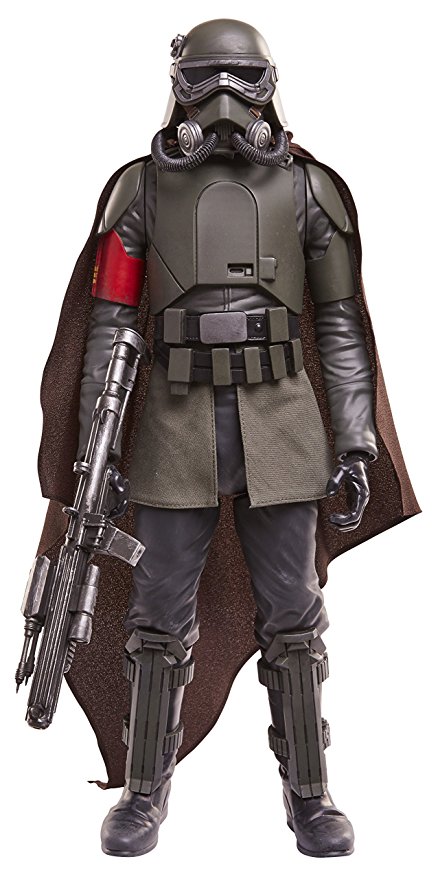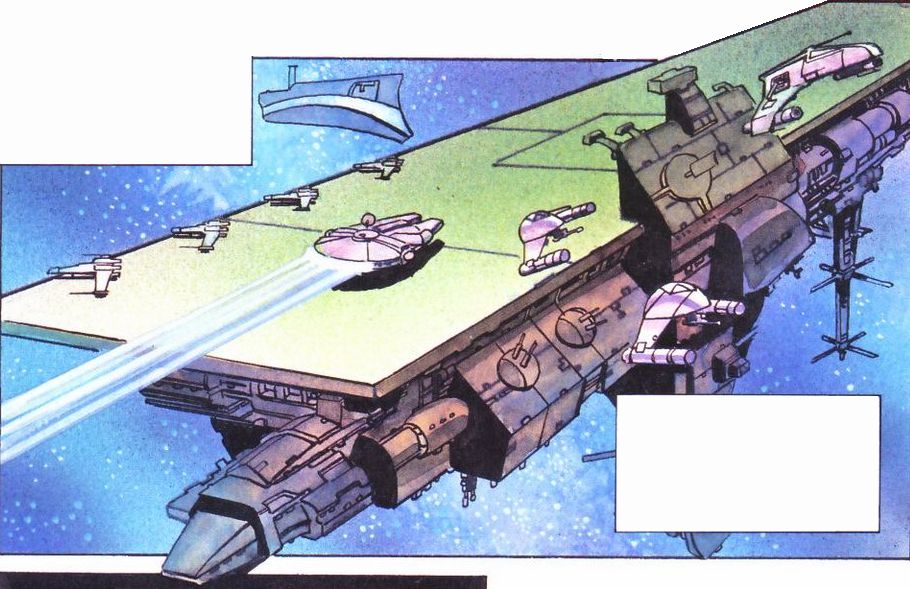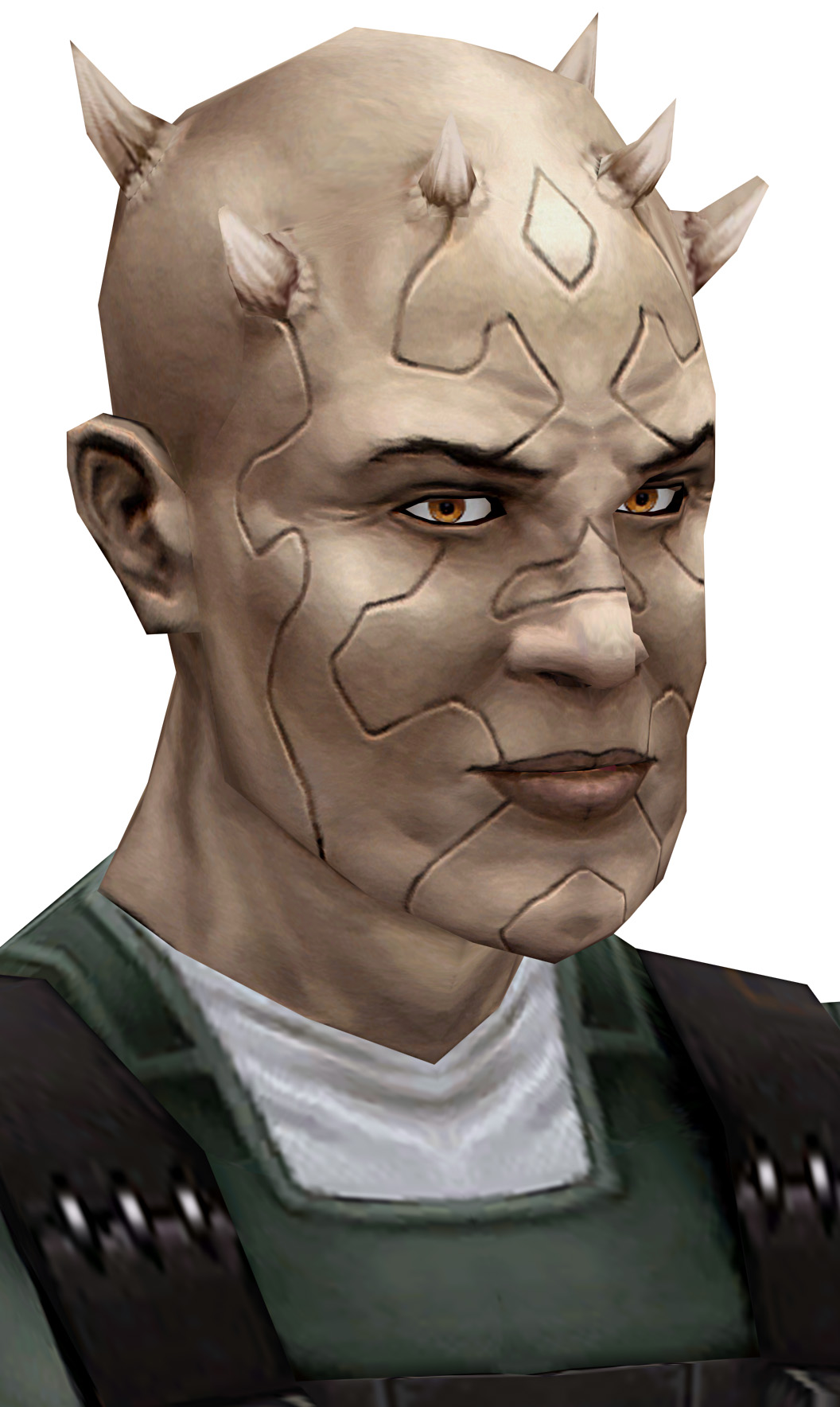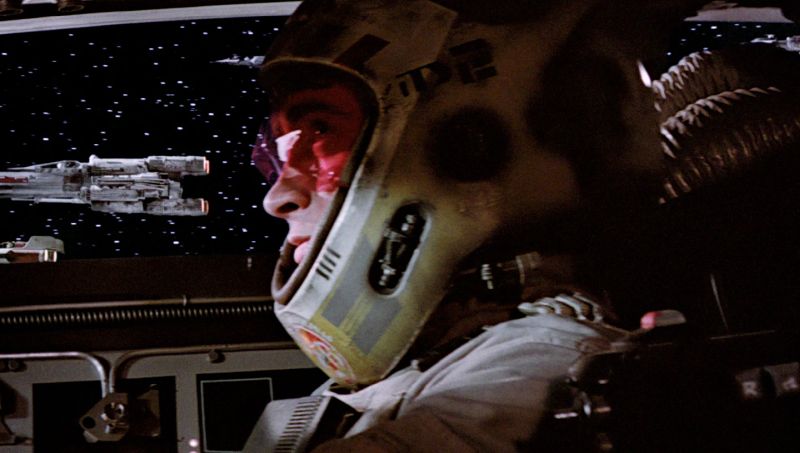MOBILE SUITS
for the StarWars D6 RPG
Introduction
Overview
Basic rules, movement and combat
the NewType
Gimmicks and Gadgets
A printable Mobile Suit template
Example mechas
Epilogue (short story)
-- Introduction --
As it's more rabid fans know, the Star Wars Universe has, at one time or another, hosted almost every sort of technology imaginable. One type, strangely, seems to have so far escaped: Mobile Suits (if you don't know what Mobile Suits are, go and see the Official Gundam website, or one of any number of fan sites out there). The only things that came anywhere near them were military walkers; but as all Gundam fans know, Walkers and Mobile Suits simply don't play in the same yard. And after having seen Donovan Morningfire's Mobile Suit GUNDAM For the Star Wars D20 RPG guide (and borrowed a few ideas from it :^D ), i thought it would be a good idea to introduce these machines to the Star Wars D6 RPG.
And here, for your enjoyment, is the result.
-- Overview --
While there are several types of piloted humanoid machines, they are most commonly divided into two categories: Mobile Suits and Mobile Armours (strictly speaking, they aren't necessarily humanoid: anything from the Wing Gundam Zero to Voltron to Zoids could be put in this broad category. But, to move on...) The difference between the two is, basically, that Mobile Armours are larger than Mobile Suits, and often controlled by crews, while Mobile Suits are under the control of a single pilot. The advantage with Mobile Suits is their flexibility: their body structure and the presence of hand-shaped grippers (usually) give them versatility far beyond single-purpose machines. True, a 'traditional' vessel (e.g. an X-Wing or a YT-1300) would outperform any Mobile Suit... in one area. In all others, the Mobile Suit would have the advantage.
This makes Mobile Suits more common in certain lines of work (well-funded scouting, for example, since the scout's very survival can sometimes depend on their adaptability) or certain regions (the Corellians' taste for versatile spacecraft is well known). In spite of this, Mobile Suits can be found anywhere if you search hard enough. Although they are at a disadvantage when pitted against dedicated combat craft, some cultures consider that the psychological factor alone compensates for this. It is often these cultures which have developed the gargantuan devices known as Mobile Armours, which are something of a bastard design: an attempt to create an effective combat-oriented cross between a Mobile Suit and a battleship. Those attempts which meet with success are scarily effective and tend to give rise to legends.
This guide contains movement and combat rules for Mobile Suits and Armours, details a new special ability (the NewType), lists several rules specifically designed with Mobile Suits in mind and includes a few example models for use with the D6SWRPG. A later version will contain detailed Engineering rules for players wishing to design and build their own custom Mecha, if i can get those rules to work :^/ .
-- Basic rules --
Skills and scales
Mobile Suits are a new form of mechanised transport, and as such, they require their own skill. Luckily, the D6SWRPG has already got an ideal (though often overlooked!) skill: Powersuit Operation. Piloting a Mobile Suit is complicated stuff, though, so any attempt made with the base Mechanical attribute suffers a -3D Unskilled penalty. Mobile Armours are truly different from anything seen so far in the Star Wars universe, so they require a different skill: Mobile Armour Operation.
Repair relies on Mobile Suit Repair for Mobile Suits (a new skill, use standard repair rules), while Mobile Armours require the Capital Ship Repair skill.
Mobile Suits, or Mechas as they are also called, come in several varieties, and are usually divided into groundbound, spaceworthy and airborne:
Groundbound mechas are usually incapable of flight (they might have limited repulsorlift engines, or rocket packs, also known as 'jump jets') and are optimised for surface-level operation. In RPG terms, they are usually Walker scale. Examples are the machines in Mechwarrior or Battletech.
Spaceworthy mechas are capable of working on the ground (like all mechas), but are also equipped for use in space. They are essentially a cross between a Mobile Suit and a small starship. In RPG terms, they are usually Starfighter scale.
Airborne mechas are designed specifically with atmospheric flight in mind, so as well as working on the ground, they have little difficulty flying or even, for some models, hovering. A convenient side-effect of the airborne mecha design is that they can also effectively function in space or even underwater with minimal upgrades (indeed, most airborne mechas incorporate these options as a matter of course). The downside is that aerodynamic suits are designed to withstand the stresses of flight and variable pressures, so they have lower all-round toughness and power supplies for dealing with other situations. In RPG terms, they are almost never more than Walker scale. An example is the Leo from Gundam Wing.
Mobile Armours are generally considered to form their own category: they are rare but are equally capable of travelling in space, on land or anywhere else (though some of the larger ones are incapable of planetary landings). They are also generally piloted by a full crew (whereas Mobile Suits commonly have a single pilot). In RPG terms, they are almost always Capital scale. Examples are Voltron, or any of the multiple variations on Power Rangers.
Movement
As far as skill mechanics go, piloting a Mobile Suit is much like piloting any other vehicle: manoeuvres are handled with the Powersuit Ops or Mobile Armour Ops skill, and Astrogation, Capital ship Gunnery, Capital ship Shields, Communications, Sensors, Starship Gunnery, Starship Shields and Vehicle Blasters are all used as usual where relevant.
The movement rules presented in the 2nd edition R&E can be applied to Mobile Suit movement with the following changes:
Mobile Suits can change their movement rate by two steps per round as per the running skill, even while flying (watch the duel at the South Pole between Heero Yui and Zechs Merquise if you don't believe me). Mobile Armours can change their movement rate by one step per round, as per standard vehicle rules.
On a failed move roll, use the running accident chart if on land, the vehicle accident chart if airborne (or swimming) and the starship accident chart if in space. Collision damage uses the chart given for vehicles and starships.
This isn't a change: it's a clarification. Piloting a Mobile Suit always uses the Powersuit Ops skill, regardless of whether the mecha is walking, flying, swimming, digging, travelling in hyperspace, falling, hopping on one foot... :^) . Mobile Suits are designed to be adaptable, and their controls have to follow. The same goes for Mobile Armours and the Mobile Armour Ops skill.
Combat
As with the Movement chapter, most of the rules for vehicle and starship combat can be reused for mecha combat. The only changes that need to be done are to the damage tables.Shields blown/
Ionised controls No change. Note that Ionised controls affects Manoeuvrability and Dexterity (see below for details on Mobile Suit Dexterity).
Light damage
1. -1D to Manoeuvrability. If Manoeuvrablility is already at 0, -1 Move instead
2. -1D to DEX on one limb. If DEX is already at 0, -1D to STR instead on that limb.
3. -1D to STR on one limb. If STR is already at 0, -1D to DEX instead on that limb.
4. -1 Move. If the mecha isn't ground-bound, randomly determine which type of movement is damaged (running, flying or swimming).
5. Damaged hyperdrive. Same as for standard rules. If the Mecha hasn't got a hyperdrive, this has no effect.
6. One built-in weapon is damaged. It can no longer be used until mended
Heavy damage
1. -2D to Manoeuvrability. If Manoeuvrability is already at 0, -2 Moves instead
2. -2D to DEX on one limb. If DEX is already at 0, that limb is destroyed.
3. -2D to STR on one limb. If STR is already at 0, that limb is destroyed.
4. -2 Moves. Same rules as above
5. Sensors blown. Sensors and targeting computers stop working until repaired
6. Transformation damaged. The Mobile Suit can no longer change into any of it's alternate forms. It is stuck in it's current form until repaired. If the Mobile Suit isn't a Multiform, ignore this effect.
Critical damage
1. Main power core failure. The mecha can no longer move or act in any way until the principal generator is repaired.
2. Engine destroyed. One means of movement is destroyed and must be replaced (legs, thrusters, etc.)
3.
4. Hyperdrive destroyed. The mecha can't enter hyperspace until the hyperdrive is replaced. If hyperdrive isn't present, apply 'Engine destroyed' instead.
5. Fire control blowout. All weapons are destroyed and must be replaced.
6. Meltdown. The main power core goes critical, causing the mecha to lose all structural integrity and explode dramatically.
Any mecha which loses all it's moves isn't destroyed. Apply the effects of 'Main power core failure' instead
A few additions to the rules are also necessary to take advantage of the unique options offered by a Mobile Suit.
Hand-held range weapons rely on the appropriate Gunnery skill as mentioned in the Movement Rules section.
One of the interesting points of Mobile Suit usage, machine-to-machine m?l?e combat, can be handled in several different ways depending on your gaming style:
The simplest method would be to handle strikes and parries with the basic Powersuit Ops skill. This method most closely follows the published rules, but diminishes the effectiveness of the NewType special ability.
A variation on this would be to use the Powersuit Ops skill, but with a penalty. This penalty can be a constant -2D, or for the more detail-loving players, use Powersuit Ops or the relevant character-scale skill (M?l?e combat, Brawling combat, etc), whichever is lower.
On the other hand, if you're not afraid of introducing new skills galore, simply apply skills such as Mobile Suit Brawling combat which follow the same rules as their character-scale counterparts.
The most effective method is probably the constant -2D penalty, but the others are mentioned in case your group prefers them. Combat rules are simply the same as those applied to character-scale brawling and m?l?e. In the case of mecha versus non-mecha brawling/m?l?e, the non-mecha is at a serious disadvantage: it cannot attack or parry, and usually can't use it's distance weapons at such short range either.
Finally, mecha templates are similar to vehicle and starship templates, but bear two extra mentions: Dexterity and Strength. Dexterity is an alternate form of Manoeuvrability, and is used instead as a to-hit and parry modifier in a brawl or m?l?e. It is also used in other tasks requiring precision hand-work, but Manoeuvrability, not Dexterity, is added to Dodging and Evading rolls. Strength isn't a modifier: it measures the mecha's lifting and pushing power, and serves as base impact-damage in a brawl or m?l?e.
-- The NewType --
NewType is a term coined in one of the Mobile Suit Gundam animes (i forget which), and refers to a person who possesses an inborn, instinctive ability to use a Mobile Suit. This gives them a serious advantage when piloting one of them. Unfortunately (for the various military organisations out there), they are also extremely rare. To simulate this, and because i think it makes sense, the NewType special ability is dependent on Force-Sensitivity, meaning only Force-Sensitives (they don't have to be trained in the Force) can be NewTypes. As usual, a player who wishes to be play a Force Sensitive NewType PC must obtain the GM's approval.
When a NewType pilots a Mobile Suit, it becomes like an extension of their body. To simulate this, NewTypes needn't learn any of the usual skills required for piloting mechas: instead they use the regular character-scale skills, e.g. Blaster instead of Starship gunnery, Search instead of Sensors, and still get to add the Suit's modifiers. Powersuit Ops is replaced by Dodge, Running, Swimming or even Flying depending on the circumstances (this allows a character to learn the Flying skill, even if they wouldn't be able to normally). The -3D Unskilled penalty doesn't apply to NewTypes, and if using the 'default -2D penalty for MS combat' rule mentioned above, it doesn't apply either. NewTypes (and only NewTypes!) are also allowed to use skills such as Acrobatics and martial arts manoeuvres, when piloting Duelling mechas.
As a final note, NewType characters ONLY receive these advantages when PILOTING a MOBILE SUIT. Starfighters and Mobile Armours are out of the question (Starfighters because their shape is different from the pilot's body, and Mobile Armours because they are too complicated and usually require piloting crews).
-- Gimmicks and Gadgets --
Miscellaeneous or in-progress rules, bits and pieces, stuff, fluff and whatever didn't fit anywhere else.
Multiform: the ability to physically transform and take on a different shape, functions and/or abilites. Examples are a secondary Mobile Suit form (feline, herbivore, etc.) or a more traditional vehicle (landspeeder, jet-fighter, 'hybrid' i.e. Macross Gerwalk/Guardian mode).
This ability requires a secondary set of stats which remain related to the original. When designing a multiform, first set out the stats for the primary form. The stats for the secondary form can change up to 50% either way, but for every stat which is increased, there must be another stat which is decreased by the same percentage. Another option is simply to have some equipment not work in certain forms, but again this must be balanced (for example, the X-Wing: with the foils closed, the lasers are unpowered, when they are opened, the hyperdrive is de-activated). Note that this is one way of dealing with spaceflight: the alternate form (e.g. starfighter) gets particle shields, and loses another system (usually weapons).
The NewType ability only applies to secondary forms if this makes sense (see the section on NewTypes). Under a non-body-shaped secondary form, use the specific skill if it exists (e.g. Speeder Ops), otherwise use Powersuit Ops -1D.
This ability will be better detailed once the Engineering section is up and running.
Combined (Mobile Armours only): the ability to link several vehicles together, creating a Mobile Armour. This ability is complicated and still needs work, but here is a simple, preliminary version:
a Combined Mobile Armour is composed of at least three specific vehicles/mechas.
those vehicles are purpose-built and cannot be replaced by different models.
the vehicles are, at most, starfighter scale.
Combined Mobile Armours are one scale up from the highest-scale vehicle.
Combined Mobile Armours are crewed by the combined crew of the vehicles used, using the Mobile Armour Operation skill, and others as usual.
until better detailed, GMs can fit any stats they want to the Mobile Armour. GMs might want to include a combined action bonus to some scores.
As mentioned, this is still very preliminary, and will also be better detailed once the Engineering section is up and running.
Duelling: designates mechas which have been designed with speed and flexibility in mind. These designs were originally (millenia ago) formal duelling machines, and the name stuck. These days, enhanced handling verniers and extended articulations give duelling mechas greatly improved control, precision and handling speed over more mundane Mobile Suits.
In game terms, duelling mechas receive a +3D bonus to Dexterity and allow NewTypes to use skills such as Acrobatics and martial arts manoeuvres. For those who don't like the idea of rolling 74D+1, instead ignore the opponent's Manoeuvrability and Dexterity when in close-quarters combat.
Jump-jets: jetpacks or rocket-packs which work identically to their character-scale counterparts. Each pack is designed for a certain scale of mecha: if using a pack on a mecha one scale higher, halve the number of charges. Jump-jets cannot be used by mechas two or more scales above the one intended. Such jump-jets usually have the same stats (number of charges, distance covered etc.) as their character-scale counterparts, at between 5 and 8 times the price. This obviously makes some of them pretty ineffectual when used on large mechas.
A second type of jump-jets are instead miniature repulsorlifts: these draw on the Mobile Suit's power supply and can therefore be used by any scale of Mobile Suit. They impose a -1D penalty while in use (due to the power drain), and usually give a move rating of 140; 400 km/h with a flight ceiling around 250m. They are usually quite cheap, rarely weighing in at more than 800 credits. Mobile Armours will usually need several repulsorlift jump-jets to achieve the same effect.
If you really want your Mobile Suit to fly, it's usually better to get an airborne one (if possible) than rely on jump-jets.
'Local speciality' weapons:
Head and shoulders blaster. Reaction & point-defence weapon.
FIRE ARC: Forwards, or Forwards, left & right
SCALE: Speeder
FIRE CONTROL: 3D
SPACE RANGE: 0/1/? (no long range)
ATMOSPHERE RANGE: 3-15/40m/? (still no long range)
DAMAGE: 5D
NOTE: Can be used to intercept missiles, torpedos, etc, if the pilot was aware of them the round before
Dragon Fang
TYPE: Extendable arm with pincer
SKILL: Powersuit Ops or Projectile launcher
DIFFICULTY: Easy
RANGE: 20m to 40m depending on the size of the Mecha
DAMAGE: 4D
NOTE: can only be used once per round, since it needs to be retracted before being used again.
Description: An odd weapon, seemingly inspired by the legendary Star Dragons. It is a claw-like weapon that looks much like a buckler when not activated. When used, it unfolds into a simple but strong pincer, and is fired (somewhat like a grapple) at the target. A Dragon Fang can only be mounted on the arm, as the arm itself is extended out to allow the Dragon Fang to be used at range.
Rules on using a Dragon Fang in combat:
once the Dragon Fang has hit a target, and until it retracts, consider that the Dragon Fang has grasped that target.
parrying using a Dragon Fang is impossible, however, the user can choose to attack the opponent's weapon. In this case, roll the user's attack -1D, and if successful, apply damage to the opponent's weapon (and/or consider it gripped). The opponent can attempt to avoid the attack on their weapon by rolling their relevant weapon skill (as a reaction roll): if higher than the user's roll (still -1D) then they have avoided the strike.
Heat Rod
TYPE: wave-guided energy lash
SKILL: Powersuit Ops (NewTypes: Lightwhip)
DIFFICULTY: Difficult
RANGE: Same distance as height of mecha
DAMAGE: 6D
Description: A whip-like weapon, the 'cord' is made of a flexible metal, with high energy passing through it, giving it the ability to 'melt' it's target.
Rules on using a Heat Rod in combat:
the user can declare they are attempting to ensnare the target with the Heat Rod. If the roll succeeds by 10 or more, the Heat Rod successfully coils around the target. Depending on the circumstances, it could come off again as early as the next round. As long as the target is ensnared, apply damage every round.
if the attack roll is failed, reroll one difficulty higher (free action). If this roll is failed, the Heat Rod is considered to have struck the user: apply damage. The saving reroll is harder, due to the cord's odd energy-induced reactions.
parrying with a Heat Rod follows the same rules as with a Dragon Fang.
Buckler shields. Usually used only on duelling mechas
Most bucklers give a +1D or +2D bonus to Powersuit Ops when parrying (or to M?l?e parry for NewTypes). Some bucklers are shaped and weighted to be used as offensive weapons as well, and usually do STR+1 or +2 damage.
Note: if such a buckler has been used to attack, it cannot be used to parry on the next action.
Buster rifle. Just another big gun, really.
FIRE ARC: hand-held
SCALE: Capital
FIRE CONTROL: 5D
SPACE RANGE: 1-3/12/25
ATMOSPHERE RANGE: 2-6/24/50 km
DAMAGE: 6D
NOTE: Imposes an enormous drain on the power source, and usually can only be fired a certain number of times (e.g. three or four) before needing to be recharged.
OTHER NOTE: Unless playing a very high-powered game, this is usually a plot device.
more plot device stuff which defies the laws of reality and common sense and would give your local munchkin fits (double-barrelled buster rifles, Gundanium alloy, Zero system, Full cloaking devices, etc.), is, in fact, plot device stuff, so rules don't apply :^D. Invent a handful of suitably horrifying stats (adding 5D is a good start).
As usual, if you, as GM, give some of this stuff to your players, keep them on a short leash until you're out of the danger zone.
-- Blank template --
A printable blank template can found be at this link. (This works on my computer, but if it doesn't work on yours, send me a mail with "MS guide bug report" as the subject line, tell me all about it, and i'll do something better).
Template guidelines
CRAFT: Name or designation
TYPE: Model, category. Also specify whether groundbound, spaceworthy or airborne
SCALE: walker, starfighter or capital (sometimes speeder, but this is rare)
HEIGHT: (instead of length. In some cases, e.g. felinoid mechas, this will revert to length)
SKILL: Powersuit Ops (NewTypes: N/A) or Mobile Armour Ops
UNSKILLED: -3D (on average)
CREW: 1 for Mobile Suits, most Mobile Armours require a crew of anywhere from 3 to several thousand (for the big ones)
CREW SKILLS: pilots are usually specialists. Often 4D - 6D
PASSENGERS: usually none. Some Mobile Suits can carry a passenger, and Mobile Armours sometimes carry accomodation for troops.
CARGO CAPACITY: usually very low. Certain models might have dedicated cargo space, and 'backpack' cargo pods can also be found.
COVER: usually full
ALTITUDE RANGE: usually unlimited for airborne models, N/A for most others
CONSUMABLES: several days or weeks if the mecha is spaceworthy or airborne, but if groundbound, usually a few hours, or days at most. In both cases, exceptions do exist, of course.
COST: pretty expensive (i'm no good at prices).
HYPERDRIVE MULTIPLIER: standard (if relevant).
HYPERDRIVE BACKUP: ditto.
NAV COMPUTER: for spaceworthy and most airborne models
MANOEUVRABILITY: standard, +2 - 2D
MOVE: approx 55; 160 km/h (for a twenty-metre humanoid model, adjust at your convenience).
ATMOSPHERE: where relevant, up to 350;1000km/h
SPACE: where relevant, up to 7
HULL: the unusual constraints on a Mobile Suit require focused structural strength, so there is less all-round resistance against other forms of damage, at most 4D (but can go as low as 2D, sometimes).
SHIELDS: groundbound mechas are rarely equipped with shields of any sort. Any kind of mecha designed for space travel needs to be protected from space dust and other micro-debris (much like any other starship). The problem is that particle shields simply weren't designed to handle the constantly changing Mobile Suit's body positions. Most spaceworthy and airborne models are equipped with energy shields, but when in space these shields must be left on almost constantly, draining energy. For a way round this problem, see the section on Multiforms. Mobile Armours don't suffer this drawback.
DEXTERITY: usually 50% higher than Manoeuvrability, 1D - 3D (don't forget: special duelling models get a +3D bonus).
STRENGTH: usually quite high, 3D - 5D. Note: this is where most of the structural strength goes, which would otherwise be in the Hull score.
SENSORS: can be found on most mechas, though low-end, groundbound mechas might not have any at all. Some Mechas haven't got a Scan Mode, and the Search and Focus modes often follow the head position.
WEAPONS: list the built-in ones as well as those carried 'by hand'. Hand-held and arm-mounted range weapons still get a Fire control code, and their fire arc is 'hand-held'. M?l?e weapons use the pilot's skill plus the suit's Dexterity to hit, and the suit's Strength plus the weapon's modifier for damage. The same applies to brawling, though in this case there usually isn't a damage modifier.
Notes: Many Mobile Suits have one or more 'special abilities' such as Multiform, or more traditional ones, similar to the special abilities possessed by certain species.
-- Example Mechas --
The fine pictures used in these templates are by GreaseWookiee , BRodgers, Strikerkc and The Admiral, of the newly-established Star Wars Artist's Guild (SWAG).
Scouting Mobile Suit: the ChancellorERA: Old Republic / TotJ
CRAFT: Corellia StarDrive JF-1000
TYPE: Hostile Environments Scouting Mobile Suit (groundbound)
SCALE: Walker
HEIGHT: 15m
SKILL: Powersuit Operation
UNSKILLED: -3D
CREW: 1
CREW SKILLS: Powersuit Ops 4D, Sensors 4D, Vehicle Pulsewaves 3D, Survival 5D
PASSENGERS: none
CARGO CAPACITY: 2 cubic metres (samples)
COVER: Full
ALTITUDE RANGE: ground - 150m
CONSUMABLES: power supply for 5 days; can be atmosphere-sealed comfortably for 24 hours
COST:
MANOEUVRABILITY: 1D+1
MOVE: 40; 115 km/h
ATMOSPHERE: 130; 375km/h
HULL: 3D
DEXTERITY:2D
STRENGTH: 3D+1
SENSORS:
Passive: 300m / 0D
Scan: 800m / 1D
Search (follows the head position): 900m / 2D
WEAPONS:
Mobile Suit Pulsewave Sidearm 'Peacemaker'
Fire Arc: hand-held
Skill: Vehicle Pulsewaves (or Pulsewave weapons for NewTypes)
Fire Control: 1D
Ranges: 50-100/400/1000 m
Damage: 3D
Repulsor field: this suit is equipped with a built-in repulsor field. While the repulsorlift is activated, use the atmospheric speed and altitude range, but the power drain imposes an extra -1D penalty on all actions.
Hostile conditions: the repulsor field can also shield the suit from hostile atmospheric conditions (intense hail, acid rain, type IV atmospheres, etc.). While the repulsorlift is used in this way, the suit gains +3D to resist damage from the environment, but suffers an extra -1D penalty to all actions.
Capsule: an early CSD model, the JF-1000, or 'Chancellor' as it was nicknamed, was designed to take advantage of a large-scale Republic planetary survey program. It is a fairly good unit for it's era, sporting ingenious shield/repulsorlift engines, (at the time) state-of-the-art sensors intended to aid the pilot in mapping the area, and even internal containment pockets to store samples pending further analysis. The conical part of the lower arm is a modular, replaceable pod, prevalent in many Correlian designs. They can be replaced by extra equipment (drills, heavy grippers, more powerful sensors, etc), extra armaments (ask your GM), or a variety of modules commercialised by CSD and, for that matter, many other Corellian companies.
Constructor Mobile Suit: Working JoeERA: any, really
CRAFT: Varge Corp. BXR IX Labourer mecha
TYPE: Construction/earthmover Mobile Suit (spaceworthy)
SCALE: Walker
HEIGHT: 21m
SKILL: Powersuit Operation
UNSKILLED: -1D (instead of the usual -3D)
CREW: 1
CREW SKILLS: Powersuit Operation 5D, Starship Shields 3D
PASSENGERS: none
CARGO CAPACITY: none (but can carry loads 'by hand')
COVER: full
CONSUMABLES: 48 hours
COST: medium high (i'm still no good at prices)
MANOEUVRABILITY: 1D
MOVE: 55; 160 km/h
SPACE: 2
HULL: 2D+2
SHIELDS: 1D+1
DEXTERITY: 3D
STRENGTH: 5D+1
SENSORS:
Passive: 10 / 0D
Scan: 20 / +2
Search: 30 / 1D+1
Focus: 1 / 2D+2
WEAPONS:
Drilling/welding lasers, improvised weapons (2, arm-mounted)
Fire Arc: turret
Skill: Powersuit Operation (or M?l?e for NewTypes)
Fire Control: 0D
Range: up to 10m
Damage: up to 9D
Description: designed with ease of use in mind, clearly labelled instruments and cockpit controls, plenty of feedback, and even a simple autopilot controlled by the on-board computer make this Mobile Suit a beginner's dream. As such, this mecha is a good starting point for anybody with little or no previous experience in piloting Mobile Suits. Another advantage with the BXR IX is that it comes equipped with magnetic feet, simple thrusters and ray shielding (for technical reasons, particle shielding is impossible on Mobile Suits). This allows it to function efficiently, if a little slowly, in orbital construction sites, while it's considerable structural strength and lifting power see use both in space and planetside. An added bonus is the Corellian-like ability to replace one or both grippers with other tools within minutes (in the picture, the right gripper has been replaced by a scoop).
There are a few inevitable design flaws, though. Try anything out of the ordinary and the security overrides kick in and prevent it. The welding lasers can swivel round the arm and point in just about any direction, and although this sounds like a Good Thing, the controls for those lasers are insufficient for anything other than basic operations. And (perhaps most importantly from the PC's point of view ;^D ) the BXR IX simply wasn't designed to fight: it is powerfully built, but vulnerable to damage, and when the controls are locked into precision mode, it is woefully slow.
Non-humanoid Mobile Suit: the GundarkCRAFT: Kwandek Goom Guthrit Mobile Suit
TYPE: Extended Mobile Suit (groundbound)
SCALE: Walker
HEIGHT: 23m
SKILL: Powersuit Ops
UNSKILLED: -3D
CREW: usually 1, sometimes also a co-pilot
CREW SKILLS: Powersuit Ops 4D, Sensors 4D
CARGO CAPACITY: 6 metric tons
CONSUMABLES: a few days
COST:
MANOEUVRABILITY: 1D+2
MOVE: 70; 200 km/h
HULL: 3D+2
DEXTERITY: 2D+1
STRENGTH: 5D
SENSORS:
Passive: 20 / 0D
Scan: 35 / 1D
Search (follows head position): 40 / 2D
Focus (follows head position): 2 / 3D
WEAPONS:
Medium blaster cannons (2)
Fire Arc: hand-held
Skill: Powersuit Ops (or Blaster for NewTypes)
Fire Control: 2D
Range: 50-200/500/1000 m
Damage: 4D
Gundark-shaped: for members of species with four arms and/or a tail, apply the rules found in their description. Most pilots, though, won't be able to use all the functions of the Guthrit at the same time, e.g. humans can only use two of the arms, and can't use the tail at all.
Cockpit refit: to deal with this, it is possible to adapt the cockpit to pilots with less than the full number of limbs. This allows the pilot to switch between the upper and lower arms (one full action to change). Pilots who lack a natural tail can also activate the suit-tail in the same way, but in this case they receive an extra -3D penalty to their skill rolls using the tail. Because of this, the tail can alternately be configured to automatically help with balance (+2D to resist toppling).
Co-pilot: an alternate refit is to enlarge the cockpit and make room for a co-pilot. In this case, each operator is assigned a pair of arms, and the co-pilot can, if required, also control the suit-tail at the same time (again, if the co-pilot hasn't got a natural tail, this must be done by foot controls and therefore suffers the -3D penalty).
Capsule: obviously, this Mobile Suit wasn't meant to be used by gundarks. Instead, it was designed and built by the state industry of the comparatively little-known Kwandek species, to be used during their planned conquering of their region of the Galaxy. After a military build-up which lasted almost 60 years, the totalitarian Kwandek Goom regime was unexpectedly overthrown by a popular tree-huggers association which subsequently splintered into multiple micro-parties, and the whole arms race thing was scrapped and auctioned off. The Republic refused to get involved with what it saw as a petty (and failed) power attempt.
This revolution had several results. Firstly, the Kwandek's home planet and nearest colonies are now an irritating, stupid place, rampant with corruption and plate glass greenhouses. Secondly (and more interestingly for the average PC), Guthrits are now quite common in the galaxy (as weird Gundark-shaped mechas go), and many have been adapted for use by other species. The template presented above is for a stock model, but most have been improved, downgraded, trashed, rebuilt, abandoned, tweaked, sabotaged, tinkered with, buried in soft peat for three months and recycled as firelighters, or just repaired with substandard parts at one point or another in their history.
Because of this, many variants of the Guthrit are known to exist, much in the same way as the rebel Y-Wing exists under dozens of versions.
Imperial Mobile Suit: the SpaceTrooper Mk IIIERA: Galactic Empire
CRAFT: Imperial Munitions Spacetrooper Mark III
TYPE: Combat Mobile Suit (spaceworthy)
SCALE: Starfighter
HEIGHT: 10m
SKILL: Powersuit Operation
UNSKILLED: -3D
CREW: 1
CREW SKILLS: Powersuit Ops 6D+1, Starship Gunnery 6D, Sensors 4D, Starship Shields 5D+2
PASSENGERS: none
CARGO CAPACITY: none
COVER: full
CONSUMABLES: 1 hour
COST: very high
MANOEUVRABILITY: 1D+2
MOVE: 30; 90 km/h
SPACE: 3
HULL: 3D+2
SHIELDS: 2D+1
DEXTERITY: 2D+1
STRENGTH: 4D+2
SENSORS: limited to a passive warning
Passive: 20/0D
WEAPONS:
Anti-ship Laser Cannon
Fire Arc: forwards
Skill: Starship gunnery (or Blaster)
Fire Control: 2D
Ranges: 1-3/12/25
Damage: 4D
Proton torpedo launcher
Fire arc: hand-held
Skill: Starship gunnery (or Projectile launchers)
Fire control: 2D
Ranges: 1/3/7
Damage: 9D
Arm-mounted Blaster
Fire Arc: hand-held
Skill: Powersuit Ops (or Blaster)
Fire Control: 2D
Ranges: 1-5/10/17
Damage: 3D
or Arm-mounted laser cutter
Fire Arc: hand-held
Skill: Powersuit Ops (or M?l?e)
Fire Control: none, unnecessary
Range: up to 4m
Damage: 8D
Description: Entry, as with standard spacetrooper powersuits, is through a hatch in the back. The blaster cannon fixed to the left arm can be switched to a continuous-beam setting, reducing it's range but increasing it's damage, turning it into an effective laser cutter. When not in use, the torpedo launcher is fixed to the side, like a sidearm in a holster. It only holds one torpedo at a time, but can be reloaded 'manually' from a stock of eight.
Capsule: The Zero-gravity Assault Stormtrooper (or Spacetrooper) suits Mk I and II are well known by those who frequent the Imperial military (on one side or the other), and their fearsome firepower is almost legendary. In spite of this, Mk I and II suits are most effective when used to disable starships by getting in and neutralising the crew, rather than the ship itself. They are less effective if deployed before the vessel to be boarded has been immobilised. It was to make up for these shortcomings that the Mk III was designed. In this version, the focus has been shifted away from boarding actions to direct space combat, with a corresponding increase in energy output. With the increase in size, boarding actions are now no longer possible, but these are replaced by innovative forms of ship-to-ship combat. And in those rare cases where troublemakers are using Mobile Suits of their own, the Mk III becomes the only possible solution.
Initial tests proved that Spacetrooper Mk IIIs can be exceptionally effective when deployed close to the target. However, with the Imperial strategy of drowning the opposition under the sheer numbers of troops, the production cost and limited autonomy of the Spacetrooper Mobile Combat Suit have limited it to commando-type operations. As such, it is usually piloted only by the most dedicated of the already-elite spacetroopers. A major modification of the Gamma assault shuttle allows it to carry eight Mk III Mobile Suits on two layers. The Mk III relies on this shuttle, since it lacks true sensors and must use the sensor data continuously transmitted from the shuttle.
Mobile Giant Battle ArmourYou never want to see thisA good example of the Mobile Armours described in the Overview.
CRAFT: BIZFIP Stuffyards Perpetrator-class Mobile Armour
TYPE: Humanoid Warship
SCALE: Capital
HEIGHT: 582m
SKILL: Mobile Armour Operation
UNSKILLED: -3D
CREW: 2120; gunners 111; skeleton 740 / +10
CREW SKILLS: Mobile Armour Ops 6D+1, Capital ship Gunnery 5D+2, Starship gunnery 5D+1, Astrogation 4D, Capital ship Shields 5D+1, Communications 5D, Sensors 5D
PASSENGERS: 200
CARGO CAPACITY: 4000 metric tons
CONSUMABLES: 1.5 years
COST:
HYPERDRIVE MULTIPLIER: x2
HYPERDRIVE BACKUP: x12
NAV COMPUTER: yes
MANOEUVRABILITY: 2D+1
MOVE: 245; 700 km/h
ALTITUDE RANGE: unlimited
SPACE: 4
HULL: 4D
SHIELDS: 2D+2
DEXTERITY: 1D
STRENGTH: 6D
SENSORS:
Passive: 40/+1
Scan: 80/1D+1
Search: 150/2D
Focus: 5/4D
WEAPONS:
Dual heavy turbolaser cannon (207m long!)
Fire Arc: turret
Crew: 14
Skill: Capital ship Gunnery
Fire Control: 2D
Ranges: 4-18/42/90 (can shoot onto orbit)
Atmosphere ranges: 8-36/82/180 km
Damage: 6D+1
Double light turbolaser cannons (2)
Fire Arc: turret
Crew: 8 each
Skill: Capital ship Gunnery
Fire Control: 2D
Ranges: 3-15/35/75
Atmosphere ranges: 300-1500/3500/7500 km
Damage: 5D+1
Defensive laser turrets (16)
Scale: Starfighter
Fire Arc: see picture
Crew: 2 each
Skill: Starship gunnery
Fire Control: 3D
Ranges: 1-3/12/25
Atmosphere ranges: 100-300/1200/2500 km
Damage: 4D
Concussion heavy missile launchers (46)
Fire Arc: Front
Crew: 24 total
Skill: Capital ship Gunnery
Fire Control: 2D
Ranges: 2-12/30/60
Atmosphere: 0.2-1.2/3/6 km
Damage: 6D
General-purpose very big warheads (2)
Fire Arc: hand-held
Crew: 25 total
Skill: Capital ship Gunnery (usually)
Fire Control: 3D (usually)
Ranges: varies
Damage: varies
Payload: varies
Embarked craft complement: A battalion of AT-ATs, four Gamma assault shuttles and their own complement of MkIIIs (see above), five Lambda shuttles. This is the standard complement and can, of course, be modified (within reason) if a particular mission calls for it.
Description:Ground movement would normally be quite difficult, due to size and balance issues, so several things have been done to circumvent these problems. First, several repulsor fields help support the Perpetrator and prevent it from toppling (these are the same fields which also allow the Perpetrator to fly, when power is increased). Second, the defensive lasers on the feet and legs are often used to clear the area of obstacles which would otherwise impede movement. The result is that even when walking, the Perpetrator is still cushioned on a set of repulsor fields (this is why the ground and air speeds are the same). In spite of this, most captains only fly when they have to, due to the power drain involved (which inflicts a -1D penalty on all actions while airborne, as well as laser and turbolaser damage).
The main advantage of this vessel (apart from the basic psychological factor) is that it is ground-capable, mobile and capital-scale at the same time. Once it's duties on one planet are finished, it is perfectly capable of taking off and hyperspacing to another one. It must be noted that while in space the Perpetrator is at a disadvantage against other warships: this is due to it's spaceflight configuration where it's arms and legs are folded in and most of it's weapons are offline. It is for these situations that it embarks the Gamma assault shuttles.
Capsule: Given the Emperor's pronounced taste for terror weapons, it is curious that the Perpetrator-class didn't see more widespread action. One possible explanation for this oddity is the fact that while it concentrated enormous firepower, it is overall less versatile than, say, standard military walkers (which is why it embarks a battalion of AT-ATs).
-- Epilogue --
As she walked into the shadow of the hangar, she remembered. She remembered the first time she had seen a Mobile Suit, had been starstruck by it's dashing Coreworld pilot. How she had decided she would do the same. Her memories emerged stronger in the gloom. She remembered when she had enrolled in the military academy. She had been one of only three out of over five thousand to choose that branch for her training. She climbed the ramp, lost in her memories. Her training. The simulators were at least two centuries out of date. The instructors weren't much better. She had achieved good results in the sims, good enough to graduate, in spite of everything. As she stepped onto the boarding platform, she instinctively touched the side of her head, felt the artificial skin and bone. The first true outing had been a catastrophe. Her childhood pilot had made it look so easy. But after that first attempt, she had spent eight weeks in sickbay, then in the military hospital in a bacta tank. Everybody had expected her to change branches, or just give up, if she survived. She smiled stonily to herself as she climbed into the cockpit hatch. She had proved them all wrong. The seal closed as she strapped herself in, and the memories came again, strong, vivid, painful memories of her re-education, then the months of training on outdated material, of gradually learning to feel the movements of her Mobile Suit, to stop struggling against it, to flow with the servos. And at last, one day, she had earned the rank of Mobile Suit Pilot, First Class. The screens and lights lit up, the nav-computer came online, and she gripped the controls, slid her feet into the stirrups. It seemed... so long ago. She roused herself from her dreams. She had a task to do, here and now.
She was in her element. The alarm outside started wailing as she got to her feet. She looked about in the new light from the warning lamps, taking in her surroundings for the first time. As she strode over to the far wall, her sensors told her that the commander of the garrison had called on the walker patrol. The fool. As the main hanger doors opened and stormtroopers started milling in, she reached up and pulled down a power line that had been badly attached to the ceiling. Shoddy, as always. The stormtroopers weren't a problem, she simply stepped on them on the way out. Her appearance in the open caused quite a panic. She stayed cool as always. There was a set of rocket-packs hidden in a mountain cave a little further down, but the walkers were between herself and it. No matter. She started down the mountainside. She could tell from her sensors where the walkers were, so it was easy to prepare herself. As soon as the first one came into view, she lashed at it with the power cable. It wrapped round one leg, just as it was meant to, then she toppled the boulder beside her. The boulder, the cable it was attached to and the walker all went hurtling down the cliff. For a moment she froze at the memory it summoned forth, but she had no time to dream. The second walker had already started shooting. Before it had time to do her any real damage, she snatched up the large, flat rock she had prepared and, holding it in front of her like a shield, she advanced on the walker. Just as she reached it, the rock disintegrated. No matter. In one fluid motion, she reached for the walker's head with both hands, held it firmly, and, with a sound of screaming metal, broke it's neck. Thirty seconds later she had reached the cave. All had gone according to plan. She fastened the jump-jets, and activated them. As she rose above the rim of the garrison plateau, she could see, even at this distance, the dismayed look on the Commander's face. As soon as she got a mark on her orbiting rendezvous ship, she turned her jump-jets on full.
And soared away, into the stratosphere, free.
|





